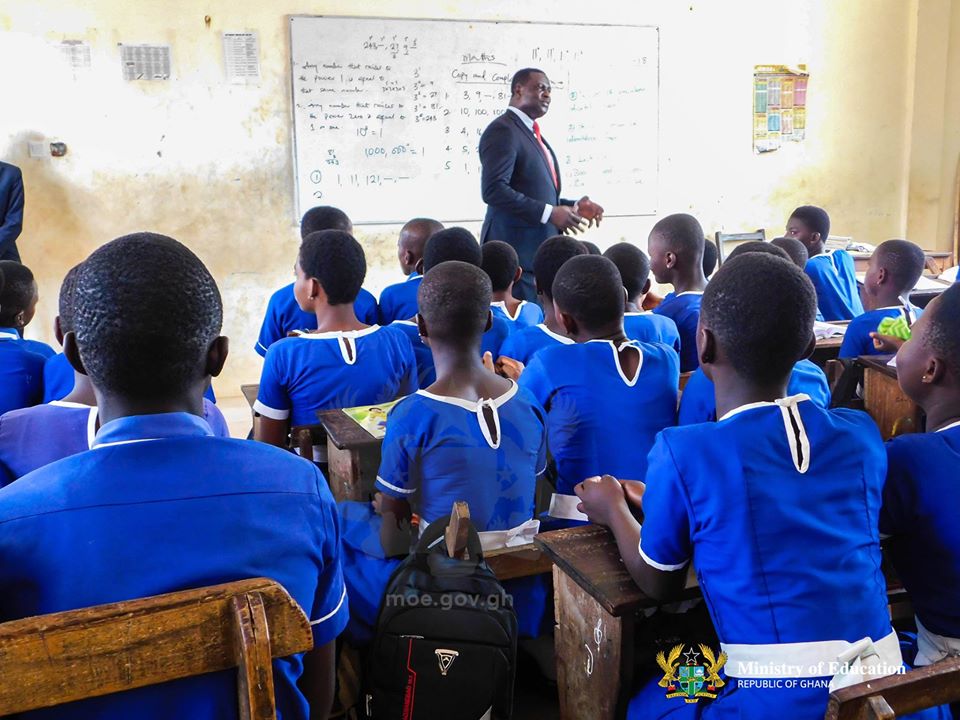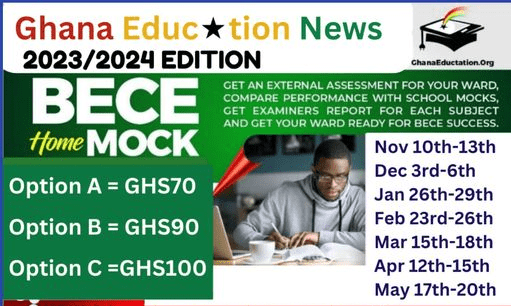2022 Teachers Guidelines For Effective And Efficient Teaching for Teachers

This is our 2022 guidelines for teachers and teaching practice students to help make them effective and efficient on the field. If you can put titbits shared in this post into action, you would become a sought-after brand as a teacher in 2022.
Whether you work in a private or a public pre-tertiary school, the ideas shared in this write will speak to you directly.
The 2022 academic year for pre-tertiary schools will commence soon and teachers and teaching practice students who will be imparting knowledge need to refresh their memories with the following guidelines.
Teachers play key roles as instructors and facilitators in the sharing, transfer, and imparting of knowledge but if they fail to have the rudiments of knowledge sharing at their fingertips, they may end up confusing learners instead of convincing them with the new knowledge they share.
Teachers and students in colleges of education who will step out to teach and engage in their teaching practice must arm themselves with the following.
2022 Teachers Guidelines For Effective And Efficient Teaching: PRINCIPLES OF TEACHING
Teaching hinges on basic but important teaching principles which have stood the test of time.
1. Proceed from simple to complex
2. Proceed from known to unknown
3. Proceed from part to whole
4. Proceed from particular to general
5. Motivate learners to learn
6. Do not teach in isolation
7. Teach to learners’ individual difference
2022 Teachers Guidelines For Effective And Efficient Teaching: METHODS OF TEACHING
A teacher’s approach to teaching a topic or lesson can help share knowledge and realize the objectives of the lesson or end up wasting precious time in the class.
Teaching methods to consider for the 2022 academic year include:
1. Problem-solving method
Children learn through working on issues in a problem-solving technique. This allows pupils to get new information by confronting challenges that need to be solved. Students are required to observe, comprehend, evaluate, interpret, identify answers, and apply what they’ve learned in order to gain a holistic grasp of the idea.
2. Play way method
The “Activity-based” or “Hands-on Experience” learning approach is predominant in the Play-way method. Children leave their homes and familiar environments to learn from a variety of individuals, including their classmates and teachers.
3. Storytelling method
Storytelling is the oldest form of education, and it has the ability to help children develop emotional intelligence and acquire insight into human behavior. Storytelling also aids language acquisition by broadening learners’ vocabularies and exposing them to new language structures.
4. Lecture method
The lecture approach is the most traditional mode of instruction. It is founded on the idealism philosophy. This strategy entails explaining the subject to the pupils. The focus is on how the content is presented.
5. Discussion method
Discussion techniques are a number of settings for open-ended, collaborative exchange of ideas between a teacher and students or between students with the goal of improving students’ thinking, learning, problem-solving, comprehension, or literary comprehension.
6. Field trip/excursion method
Field excursions are opportunities to incorporate outside experiences into a specific course. This might be in the form of field visits to relevant areas, or it could be more project-based fieldwork, with students traveling or working at one site on a regular basis as part of a study project.
7. Assignment method
The assignment technique is used by the instructor to establish an assignment with clear instructions, milestones, and grading criteria based on an objective that students must attain. As students work on the task, the instructor observes and advises them, and offers feedback that encourages them to develop.
8. Project method
The project method is a collaborative learning process assisted by the teacher in which students gain and use knowledge and skills to create and solve practical issues through an expanded investigation process. Projects are student-centered, with the teacher explicitly defining criteria, boundaries, and milestones.
9. Demonstration method
A method demonstration is a teaching approach that uses visuals such as flip charts, posters, and PowerPoint to express a concept. A demonstration is a step-by-step process of showing someone how to manufacture or accomplish something. You “inform” what you’re doing as you demonstrate how.
QUALITIES OF A GOOD EDUCATOR THAT ENSURE EFFECTIVE AND EFFICIENT TEACHING AND LEARNING
Teachers in Ghana and the rest of the world have been accused on several occasions for failing to exhibit professionalism in the performance of their duties leading to teachers being tagged as irresponsible, and a bad example to learners. The following qualities must stand out in the academic year in every classroom to give the teaching profession a good name.
Teachers must embrace the following good qualities…
1. Teachers must exhibit good class control throughout the academic year.
2. Educators must be of good behaviour. A good name is better than riches hence good character must be the hallmark of teachers and CoE students going to do their teaching practice on the field this year.
3. Keeping the diary and tracking all happenings in school, the community, the performance of the learners, and yourself.
4. Teachers should exhibit a high level of neatness from classroom management to self.
5. Be kind to learners but do not take use it to take advantage of the learners in any way.
6. Skills power is that power you have due to your skills or knowledge in a particular field. Teachers must develop mastery of the subjects they teach. Research and investigations on the topic would ensure your students are informed and given their right stuff.
7. Effective communication is key in the teaching field. Develop it, practice it, live it, and use it to develop your professional competence. Learn to communicate well with colleagues, leadership, learners, and parents.
8. How can you teach a learner the entire year without knowing the parents of the child? Go out of your way to get the contacts of parents and build a good connection with the aim of keeping them in touch with the academic progress of their wards. However, ensure your headteacher is aware.
9. The teaching profession is indirectly managed by the government and this may not go as you wished for. Learn to face the reality on the ground from disheartening classrooms to lack of TLMs for effective teaching and learning. In all this, stay focused and positive and innovate while doing your best.
10. Be flexible, life is not a rigid system and you cannot succeed in a school environment with a rigid lifestyle and rules.
Do you have an issue with any of the teachers guidelines for effective teaching and professionalism? Share your thoughts with us.
THE ROLES OF GOOD EDUCATORS: Teachers Guidelines For Effective Teaching
Teachers have key roles they must play in the academic year if education is to improve from the classrooms and schools. If you want to be a good educator take note of the following.
1. You have to prove that you are a good educator by learning to be a facilitator in the classroom.
2. Leadership is key and self-leadership is a must hence learn to be a school leader.
3. Understand the curriculum inside out to help you deliver on the job.
4. Be an instructional specialist by giving the necessary clear direction to students/learners when teaching. This also requires that you have the required knowledge of related equipment, tools, curriculum, and instructional methods.
5. Be a classroom supporter, resource provider, and mentor to the learners under your care.
TEACHING SKILLS FOR TEACHERS WHO WANT TO BE EFFECTIVE AND EFFICIENT IN THEIR CLASSROOM
Teaching is a skill, an act, a science, and a process but how effective can you be if you lack the teaching skills? The academic year requires teachers to possess the following teaching skills.
1. Have patience in school, in class, and with the pupils at all times. Control your emotions and build emotional intelligence.
2. Be confident as a teacher. Confidence can emanate from the skills you have, the experiences and knowledge you have about the topics you will teach, and your personality. Look good in your clothes, spend some good money on the clothes and perfume you wear. Do not waste a fortune on this.
3. Teaching can not be effective without communication. Use the power of words, gestures, and other non-verbal communication skills to deliver lessons, instructions, etc.
4. Be a teacher who is filled with enthusiasm. Teacher enthusiasm means having and exhibiting a lively and motivating teaching style that includes a range of behaviours, such as varied gestures, body movements, facial expressions and voice intonations, and the frequent use of humour, that reflects a strong interest in the subject. Don’t make the class a dull one, please.
5. Teachers who will excel in the academic year need to use and exhibit a high level of creativity. Teaching Creatively has been characterized as “teachers utilizing innovative techniques to make learning more engaging, exciting, and successful” (Sternberg, 2001). Creativity is a set of talents required to generate ideas that are both original and worthwhile (Sternberg, 2001). Let that creative side of you show in your work as a teacher in 2022.
6. Teachers must be dedicated to their work as educators and mentors. A dedicated teacher not only enjoys the teaching profession but also enjoys teaching. Such a teacher also works hard to make their classroom a better place for everyone. You know that feeling of being successful if your students do well after all the sacrifices and toil to impart the young and innocent mind and turn it into a well of knowledge. Yes, that is the feeling you must get at the end of every term or semester.
7. Being organized is a key teaching skill for every educator. Students are in their correct position at the proper time and understand what is expected of them, and the instructor is prepared with efficient teachings and evaluation methods.
Successful teacher-student learning and efficacy are dependent on a teacher’s ability to manage and prioritize classroom resources and timetables.
It is especially crucial during the initial few weeks of each school year since it will set the tone for the rest of the year’s standards and classroom conduct.
Go out there as a teacher and impact the lives of the learners, put in your very best, and be proud that, you have added value to the seed of promise in every learner.
Do you have an issue with any of the teachers’ guidelines for effective teaching and professionalism? Share your thoughts with us.
 PRESEC Subdue Prempeh in Fierce ‘El classico’ Contest
PRESEC Subdue Prempeh in Fierce ‘El classico’ Contest  Cecilia & Akonta: President told us so! (Feature)
Cecilia & Akonta: President told us so! (Feature)  GES Teachers Recruitment for 2022 College of Education Graduates
GES Teachers Recruitment for 2022 College of Education Graduates  Register for 2024 BECE May Home Mock
Register for 2024 BECE May Home Mock  GTEC Directive: GH¢100 Charge on Public University Students
GTEC Directive: GH¢100 Charge on Public University Students  UMaT-Postgraduate-Programmes-2024-2025 Admissions
UMaT-Postgraduate-Programmes-2024-2025 Admissions  Shell Ghana fuel prices up today
Shell Ghana fuel prices up today  2024 Elections: Don’t vote for Mahama because he won’t be accountable – Bawumia to Ghanaians
2024 Elections: Don’t vote for Mahama because he won’t be accountable – Bawumia to Ghanaians  He Has Never Taken A Dime- Pastor Gifts Four-Bedroom Bungalow To Honest Church Messenger
He Has Never Taken A Dime- Pastor Gifts Four-Bedroom Bungalow To Honest Church Messenger  Minister to investigate why EU Farm Roads project excluded Sissala area
Minister to investigate why EU Farm Roads project excluded Sissala area